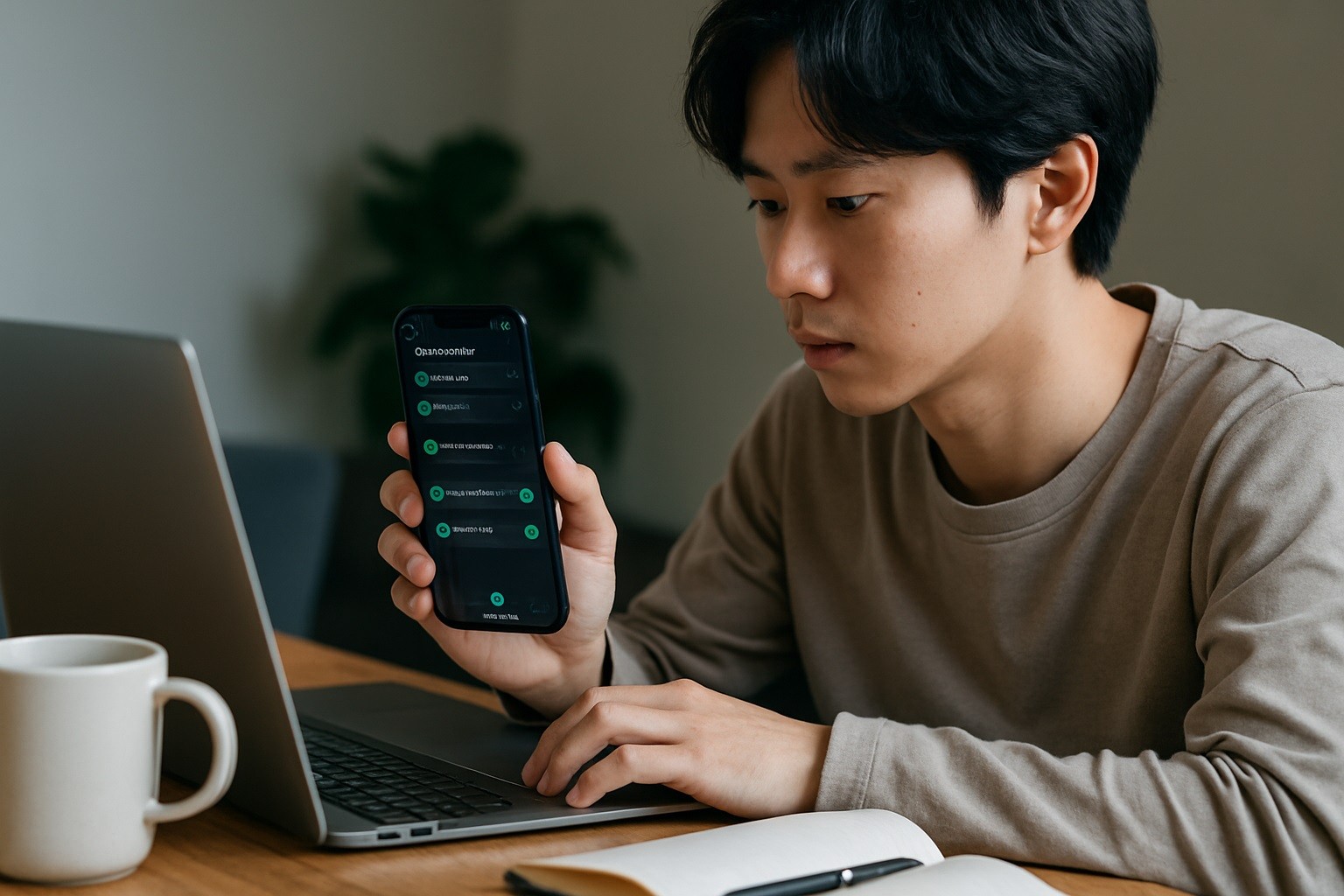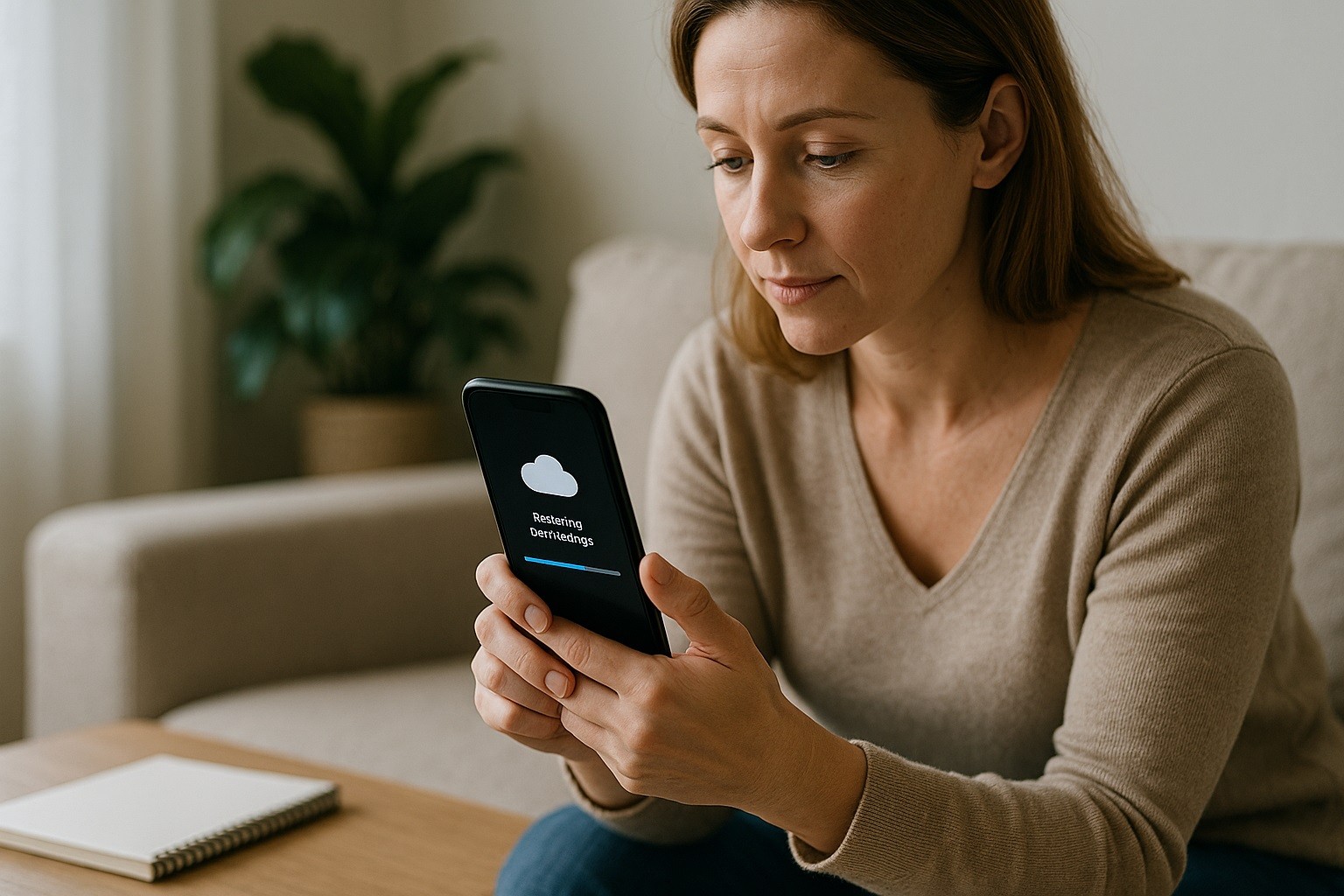Your options to read deleted WhatsApp messages are limited by design. WhatsApp uses end-to-end encryption.
Only devices that sent or received the message can read it. It also deletes content from its servers once it is delivered. So there is no central archive to pull from.
Below are clean, safe methods, also flag limits and risks, so you do not waste time.
First, Understand What “Delete for everyone” Really Does
When a sender deletes “for everyone,” WhatsApp replaces the content with “This message was deleted.”
You, the recipient, cannot reverse that in the live chat. WhatsApp gives the sender and group admins up to two days to use this option.
Past that window, the message stays. Knowing this helps you judge whether a backup taken before the deletion can still hold the original text.
Two Important Constraints
WhatsApp Web and Desktop are just linked clients. You cannot back up or restore them there. All backup and restore happen on your phone.
WhatsApp cannot restore messages for you. The company does not store your chat history on its servers.
Your recovery depends on what you saved locally or to the cloud.
Method 1 — Use Notification History (Android)
How to read deleted WhatsApp messages on Android?
The system can keep a log of notifications. When a WhatsApp message arrives, the notification often contains the text.
If the sender later deletes the message, your notification history may still show the original snippet.
- Open Settings on your Android phone.
- Tap Notifications → Notification history.
- Turn Use notification history on.
How to read a deleted message later:
- Return to Settings → Notifications → Notification history.
- Look for the WhatsApp entry at the time the message arrived.
- Open it to view the text captured in the alert.

Key Limits
This must be enabled in advance. If the notification history was off when the message arrived, there is nothing to view.
Images, videos, voice notes, and long texts may not appear in full. Notifications often truncate content.
iPhone does not provide a comparable system-wide notification log. OEM skins can change steps or behavior.
Method 2 — Restore From a Backup Taken Before the Deletion
If you keep WhatsApp backups, you can roll back your chat database to a specific point in time.
Then the “deleted” message reappears as it existed at the time of the backup. This works on both Android and iPhone.
Android (Google Drive backup)
You use the same phone number and Google Account as the backup.
A Google Drive backup exists from before the message was deleted.
You remember the password or 64-digit key if you enabled end-to-end encrypted backups.
- In WhatsApp, check when your last backup ran: ⋮ → Settings → Chats → Chat backup. If needed, tap Back up now to capture current data (optional, but know it will not include the deleted message).
- Uninstall WhatsApp.
- Reinstall WhatsApp from Google Play.
- Open it, verify your number, and when prompted, tap Restore to pull the Google Drive backup.
- Finish setup. Your chats will reflect the state at the backup time.
Google removes WhatsApp backups that have not been updated in over one year. Do not expect very old backups to exist.
You cannot restore on a linked PC or Mac. Do it on your phone.
iPhone (iCloud backup)
If you want to know how to read deleted WhatsApp messages on iPhone. You can use the same phone number and Apple ID as the backup.
An iCloud backup exists from before the deletion.
If you enabled end-to-end encrypted backups, have the password or key.
- In WhatsApp on iPhone, check Settings → Chats → Chat Backup for the last backup time.
- Delete the WhatsApp app.
- Reinstall from the App Store.
- Verify your number and tap Restore Chat History when prompted.
Again, this rolls your chats back.
Messages you received after that backup will not appear until you restore a newer backup or let WhatsApp resync history with the sender.
About Encrypted Backups
WhatsApp lets you encrypt cloud backups with your own password or 64-digit key.
Turn this on for better privacy. Keep your credentials safe. Lose them and you cannot restore.
Other Honest Checks That Sometimes Help
Photos and videos may still be in your device’s gallery if you auto-save media.
Deleting a chat message does not always remove files already saved to storage. Ask the sender to resend the text. It is the fastest path and avoids risky tools.
In group chats, an admin can delete others’ messages within two days.
If an admin removed it, you still might see a trace in your notification history (Android) or in an older backup.

What Not To Do
Ignore apps and sites that promise to “recover deleted WhatsApp messages” without backups. They cannot decrypt WhatsApp messages.
Some scrape notifications, which you can already do yourself. Many ask for broad permissions, inject ads, or worse.
WhatsApp flags unofficial clients and linking methods as a security risk and can ban accounts that use them.
Stay away from “GBWhatsApp,” “WhatsApp Plus,” and similar apps that claim to recover deleted WhatsApp messages. Use the official app only.
Set Yourself Up For Next Time
You cannot beat encryption. You can only plan.
Enable Regular Backups
On Android, set a daily or weekly Google Drive schedule: ⋮ → Settings → Chats → Chat backup.
On iPhone, confirm iCloud backups in Settings → Chats → Chat Backup. Then, actually test a restore once so you know it works.
Exports
For critical threads (work, legal, travel), export a copy outside WhatsApp. Do it periodically.
Open the chat → More (⋮) → More → Export chat (Android) or the equivalent on iPhone.
Store the .txt (and optional media) in your cloud or email.
Copies
Screenshot or copy/paste text you must keep (respect privacy and local law).
Forward an important message to your own “Saved” chat or a private device you control. The forwarded copy is a new message in that destination.
Bottom Line About Reading Deleted WhatsApp Messages
You have two reliable ways to read a deleted WhatsApp message on your device.
There is no official or safe tool that pulls deleted messages from WhatsApp’s servers or breaks encryption.
If neither method applies, accept that the message is gone. That is how the system is supposed to work.